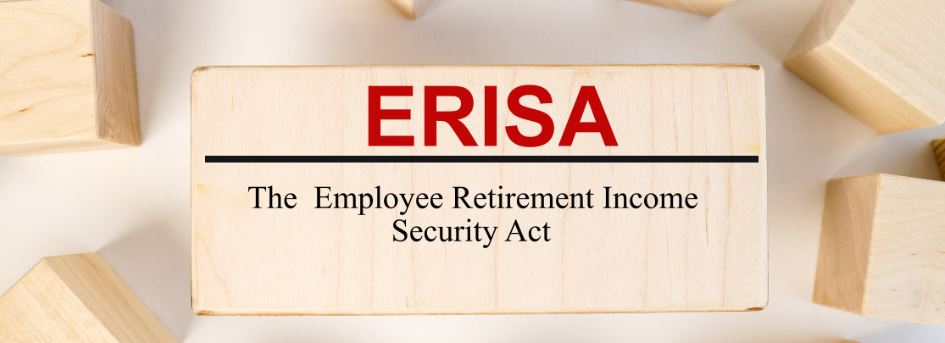Getting Your 401(k) Plan Ready For the New Year

Getting Your 401(k) Plan Ready For the New Year
It's holiday time, and the new year is just around the corner. Getting ready for the new year means preparing your 401(k) plan for year-end and early 2022 activities. When you're ringing in the New Year, don't forget to ring these into your "to-do" list.
Missing participants
Do you know where all your participants are, especially those who have terminated?
Employees are more mobile than ever today. In what's called the "Great Resignation," half of the employees anticipate looking for a new job or considering looking for one in the next 12 months, and 4.3 million quit their jobs in August alone. Many of these employees participated in a 401(k) plan, and many left their funds in their former employer's plan while they searched for a new job, later forgetting about the funds. And many will forget to let their former employer know when they move around for these new jobs. It's a huge problem.
That creates problems for you, the plan sponsor. Have you noticed their participant statements or annual notices have been returned? Do you have policies and procedures to deal with these "missing participants?" The DOL has issued guidance about this problem, which it's good to read, and expects you to do everything in your power to find them.
Uncashed distribution checks
If it's in the plan document, the IRS allows plan sponsors to cash out "small" account balances of up to $1,000 of terminated participants and send the checks to the participant's last known address. Unfortunately, many of these participants have moved and forgotten to notify you of their new address. So, the check comes back. Do you track which checks have not been cashed? Do you know where these assets are? They need to be returned to the participant's account and held until that participant can be found. Conducting a year-end review can highlight which checks haven't been cashed and allow you to start the search to find the participant and correct the situation. It's a fiduciary matter, so it's good to have policies and procedures for this.
Plan amendments
- Hardship withdrawals. Now's the time to amend your plan for the mandatory amendments to reflect legislative and regulatory changes, plus any discretionary plan amendments you have elected to add. The deadline for plans that offer hardship withdrawals and those who will need to amend their plans is no later than December 31, 2021.
Mandatory amendments include elimination of the 6-month suspension period on elective deferrals; addition of damages to a principal residence (and income) due to a FEMA-designated disaster; and addition of a primary beneficiary as one who's eligible for qualifying medical, educational, and funeral expenses.
Discretionary amendments included the elimination of the requirement to take a loan before taking a hardship withdrawal; and the addition of QNECs, QMACs, QACAs, traditional safe harbor and matching, and nonelective contributions plus earnings on all accounts to money types available for hardship withdrawals.
- CARES Act. The CARES Act allowed plan sponsors, if they so chose, to increase plan loan and hardship withdrawal amounts to $100,000 for all or part of 2020. If you made these changes, amendments for them are due no later than December 31, 2021.
Operations
- Participant records. Clean up 2021's census data, check to ensure enrollment forms, deferral change forms, distribution forms, loan promissory notes, and repayment schedules, hardship withdrawal forms, and backup documentation are in good order and ready for the plan audit (for plans with 100+ participants).
- Plan documents. In addition to hardship withdrawal and CARES Act amendments, do you have a current plan document on file along with a Summary Plan Description and any Summary of Material Modifications, IRS determination, or opinion letter? Are your service provider agreements up-to-date? Plus, investment agreements and trust reports, prior year's Form 5500, and summary annual report.
- Payroll. Timeliness of deferral deposits and loan repayments – are they being consistently made as soon as administratively possible? And how smooth is the transition of records between payroll and your TPA/recordkeeper? And how has reconciliation between payroll and TPA/recordkeeper reports gone?
- Compliance. Is the proper definition of compensation being followed between the plan document and payroll, especially as to whether bonuses and overtime are being included or excluded? Are eligibility rules being followed properly and newly eligible employees are being added to the plan on a timely basis?
- ADP/ACP failure corrections. These corrections are due no later than December 31, 2021. They include corrective distributions to HCEs or QNECs to non-HCEs or both.
Audit
As mentioned earlier, if your plan has more than 100 eligible participants at the beginning of the plan year, it generally must have an audit. Eligible participants include:
- Active employees, both those who participate as well as those who are eligible but don't participate
- Terminated/retired participants who have left their funds in the plan
- Deceased former employees who have funds in the plan their beneficiaries are eligible for benefits
If you're going to have an audit, starting early can help you have a hassle-free 401(k) Audit. Having clean records, current documents, operations that follow the plan document, and good policies and procedures will make the audit smoother for everyone.
Cybersecurity
Hackers are very active these days, targeting large well-known companies as T-Mobile and LinkedIn, not to mention the ransomware attack on Colonial Pipeline. But they're not stopping there. They're also looking at retirement plans, which often have a lot of money. Cybercrimes of retirement plans frequently take the form of embezzlement, participant impersonation, and employer impersonation. The hacker somehow gets hold of a participant's personal information and applies over the phone or through a website for a distribution from the participant's account, along with an address change.
Earlier this year, the DOL proclaimed that cybersecurity is a fiduciary duty. Having cybersecurity policies and procedures is an excellent idea, and it's all about making cybersecurity a business priority, so participant information is protected.
Don't forget about your employees as you work to keep your systems and participant accounts secure. They're your greatest weakness as well as your greatest defense. Their awareness of suspicious behavior, especially phishing, can help your efforts to prevent cybercrime.
In summary
There! You can put your broom away. Your 401(k) house is now cleaner, although the list could be longer. Keeping track of your 401(k) plan is not only important; it's a fiduciary responsibility. After all, you must administer your plan for the exclusive benefit of your participants and beneficiaries. It's therefore important to have a good compliance calendar to ensure the assets are safe and your plan stays in compliance with the DOL, IRS, and ERISA.
Answer a few questions below about your 401(k) Plan and schedule a meeting with our staff to get started!
Related posts




